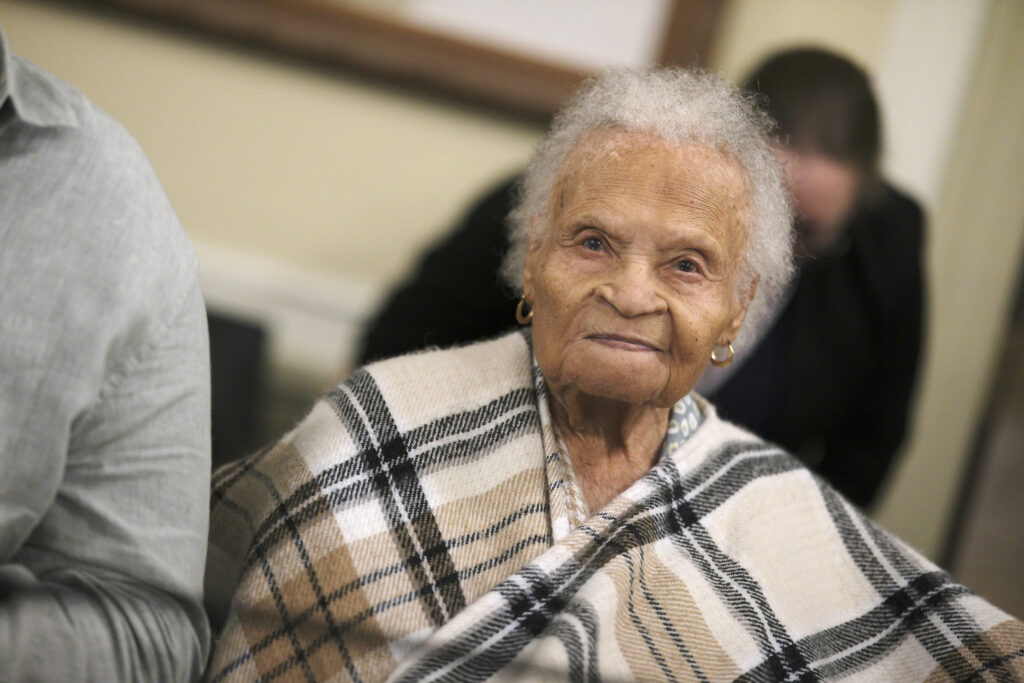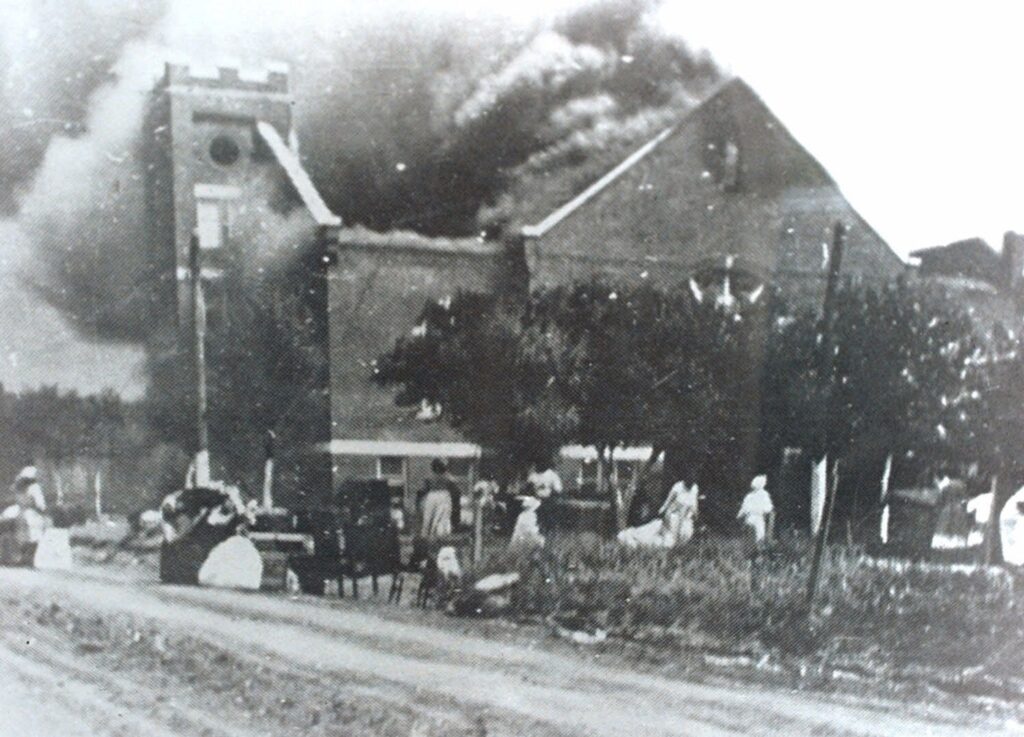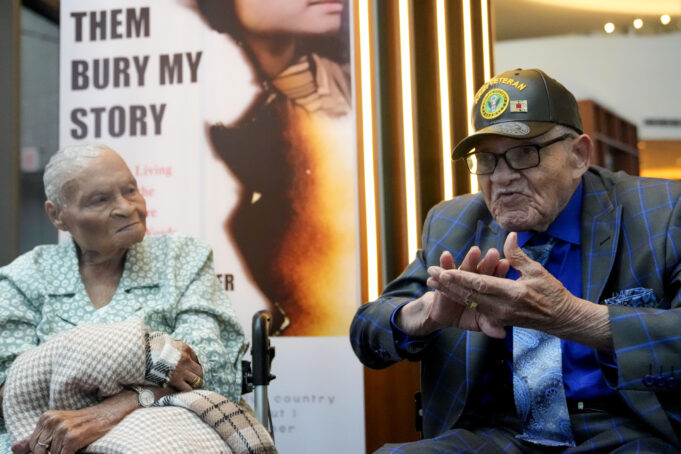Lessie Benningfield Randle, 109, and Viola Ford Fletcher, 110, were Oklahoma children in the spring of 1921 when their community of Greenwood, a neighborhood of Tulsa, known as Black Wall Street, was attacked and destroyed by a White mob that left 300 Black residents dead.
Fast forward and those centenarians’ quest for justice was recently denied when the Oklahoma Supreme Court affirmed a lower court’s dismissal of their reparations lawsuit.
The Oklahoma justices ruled that the plaintiffs’ (Randle and Fletcher) grievances, including any lingering economic and social impact of the massacre, though legitimate, “do not fall within the scope of our state’s public nuisance statute.”
“The continuing blight alleged within the Greenwood community born out of the Massacre implicates generational-societal inequities that can only be resolved by policymakers—not the courts,” the ruling states.
It was another slap in the face to the pain and anguish Black people have suffered and continue to suffer in a county steeped in blood and injustice.
The ruling adds insult to injury for the only survivors who witnessed the ravage of their homes, the death of loved ones and the financial demise of numerous families. Since the plaintiffs sued under state law and not federal law, they cannot appeal to the U.S. Supreme Court.

Damario Solomon-Simmons, the lead lawyer for the massacre survivors, explained that what happened in the spring of 1921 was essentially a “state-sponsored atrocity” and that ending the case without a trial is a blow to the notion of racial justice. The legal team plans to file a petition asking the court to reconsider its decision. It also has called on the U.S. Department of Justice to open an investigation into the massacre.
“Once again, the Oklahoma court system has failed the survivors. We think the decision is wrong and the reasoning is wrong,” he said.
On May 31, 1921, a group of White men gathered outside a Tulsa courthouse, where Tulsa police had arrested 19-year-old Dick Rowland, for allegedly assaulting a White girl. There was little evidence or proof to accompany his arrest. The media was quick to write an editorial calling for the young, Black man to be lynched.
“A group of Black World War I veterans tried to achieve justice for the young man whose life was threatened at the courthouse from a gathering lynch mob,” Frederick Al Deen of the Greenwood Policy Institute told The Final Call.
The sheriff told the Black men to leave, and they did. However, the sheriff did not tell the gathering White mob to leave and it grew to over 2,000 men. Armed Black men returned later.
“They were met by a large mob of White citizens, militia, and others bent on lynching. A fight broke out and shooting started. The question is once those people found themselves fighting the police authorities and eventually the Air Force who dropped bombs, who do they look to for justice?” asked Mr. Al Deen.
The death and destruction of the event was whitewashed from many history books. Oklahoma Supreme Court Justice Yvonne Kauger, one of the nine justices, admitted in a previous hearing that she had never learned about the massacre while in high school. None of the nine Oklahoma justices is Black.

The victims remain uncompensated for their losses and the perpetrators were never prosecuted for their crimes. An estimated 300 people were killed within the district’s 35 square blocks, burning to the ground more than 1,200 homes, at least 60 businesses, dozens of churches, a school, a hospital and a public library, according to a report issued by Human Rights Watch.
Residents claimed at least $1.4 million in damages after the massacre, or about $25 million in today’s dollars, after accounting for inflation and the current economy. But experts say it’s an underestimation. Many insurance claims were denied. Survivors were denied government assistance or restitution for their losses. Experts call it the single-most horrific incident of racial terrorism since slavery.
Tulsa wasn’t the first and it wasn’t the last prosperous Black community to be destroyed by White mobs. This terrorist activity began in 1888 with the Memphis Massacre. It started a pattern of White mobs attacking Black neighborhoods. The Memphis Massacre ended with the deaths of 46 Blacks, injuries to 75 others, and the burning of schools, churches, and homes.
Other cities terrorized and destroyed by White mobs include the Wilmington Insurrection in 1898, the Springfield, Illinois Race Riot in 1908 and the Rosewood Massacre in 1923. During this attackthat took place over a week, a White mob destroyed the predominantly Black town, killed residents (estimates range from 6 to 150) and forced survivors to flee, leaving their property behind.
“It’s further indication of the legal system’s refusal to hold the city accountable for crimes committed against its citizens,” author, talk show host and political commentator Dr. Wilmer Leon told The Final Call. “They seem to be finding as many legal loopholes, if not creating legal loopholes, as the court will often do, to avoid holding cities accountable,” he said.
“They’re afraid of opening Pandora’s Box. For example, Congress passed a resolution, I think in the 80s, where they apologized for slavery. But said that resolution cannot be used as the basis of a lawsuit, which means it was an empty apology. Bill Clinton (former U.S. President) went to Goree Island (slave trading site in Senegal).

He was so moved by what he witnessed that he, as president, offered an apology. And the backlash that he was subjected to, it wasn’t surprising, but it was horrific. The country refuses to hold any one accountable for the atrocities committed.”
The lawsuit was filed under Oklahoma’s public nuisance law. It presented a case that the severe impact of the massacre continues to be felt today. Mr. Solomon-Simmons, the lead attorney, said the city’s enduring racial disparities, economic inequalities, and trauma among survivors and their descendants are evidence of the massacre’s long reach.
In an opinion piece published on theblackwallstreetimes.com written by Nehemiah Frank, he said the court’s decision left him “broken and angry.”
“The thought that these last two survivors might never see a trial for the worst domestic attack on Black lives in U.S. history is infuriating not only to me but to Black people across this country. This is an act of judicial violence like Dred Scott v. Sandford, Plessy v. Ferguson, and Shelby County v. Holder. Hence, the ruling was expected.
Because we have seen this type of judiciary action against Black redress and equity before,” wrote Mr. Frank, publisher of The Black Wall Street Times who himself is a descendant from a family that survived the Tulsa massacre.
“For those of you who are thinking this case is just about money or making White people today pay for their ancestors’ crimes, you are woefully mistaken. This pursuit of justice for the victims, survivors, and even the descendants is about holding local governments and corrupted institutions accountable—governments that in the 1920s knowingly and proudly harbored Klansmen,” Mr. Frank wrote.
“So, I leave you with this,” he continued: “‘Let judgment rain down as a mighty stream,’ upon all who played a role in the massacre and on all who deny justice to Mother Randle, Mother Fletcher and descendants,” Mr. Frank concluded.
“This case is another sign of what the Honorable Elijah Muhammad said about why we need to separate because there is no justice for us in the White man’s world,” Nation of Islam General Counsel Abdul Arif Muhammad told The Final Call.
“He (the White man) is incapable of giving to us the justice that we desire and deserve, and his nature does not put in him the ability to give justice to the Black man, which is why God came to America in the first place and raised up the most Honorable Elijah Muhammad to call us to separate from this enemy. That call continues today in the Honorable Minister Louis Farrakhan. We have to separate and do something for ourselves.”













